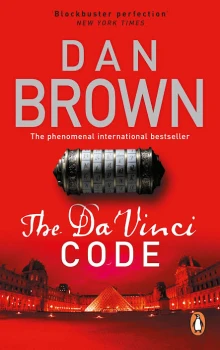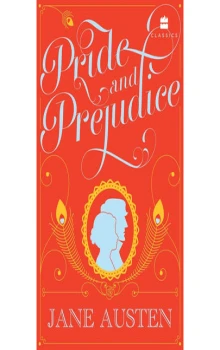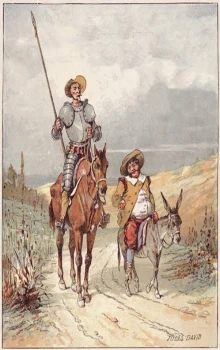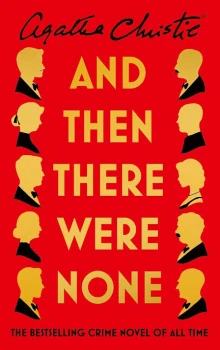Langdon couldn't tear his eyes from the glowing purple text scrawled across the parquet
floor. Jacques Saunière's final communication seemed as unlikely a departing message as
any Langdon could imagine.
The message read:
13-3-2-21-1-1-8-5
O, Draconian devil!
Oh, lame saint!
Although Langdon had not the slightest idea what it meant, he did understand Fache's
instinct that the pentacle had something to do with devil worship.
O, Draconian devil!
Saunière had left a literal reference to the devil. Equally as bizarre was the series of
numbers. “Part of it looks like a numeric cipher.”
“Yes,” Fache said. “Our cryptographers are already working on it. We believe these
numbers may be the key to who killed him. Maybe a telephone exchange or some kind
of social identification. Do the numbers have any symbolic meaning to you?”
Langdon looked again at the digits, sensing it would take him hours to extract any
symbolic meaning. If Saunière had even intended any. To Langdon, the numbers looked
totally random. He was accustomed to symbolic progressions that made some semblance
of sense, but everything here—the pentacle, the text, the numbers—seemed disparate at
the most fundamental level.
“You alleged earlier,” Fache said, “that Saunière's actions here were all in an effort to
send some sort of message . . . goddess worship or something in that vein? How does
this message fit in?”
Langdon knew the question was rhetorical. This bizarre communiqué obviously did
not fit Langdon's scenario of goddess worship at all.
O, Draconian devil? Oh, lame saint?
Fache said, “This text appears to be an accusation of some sort. Wouldn't you agree?”
Langdon tried to imagine the curator's final minutes trapped alone in the Grand
Gallery, knowing he was about to die. It seemed logical. “An accusation against his
murderer makes sense, I suppose.”
“My job, of course, is to put a name to that person. Let me ask you this, Mr. Langdon.
To your eye, beyond the numbers, what about this message is most strange?”
Most strange? A dying man had barricaded himself in the gallery, drawn a pentacle on
himself, and scrawled a mysterious accusation on the floor. What about the scenario
wasn't strange?
“The word ‘Draconian'?” he ventured, offering the first thing that came to mind.
Langdon was fairly certain that a reference to Draco—the ruthless seventh-century B.C.
politician—was an unlikely dying thought. “‘Draconian devil' seems an odd choice of
vocabulary.”
“Draconian?” Fache's tone came with a tinge of impatience now. “Saunière's choice
of vocabulary hardly seems the primary issue here.”
Langdon wasn't sure what issue Fache had in mind, but he was starting to suspect that
Draco and Fache would have gotten along well.
“Saunière was a Frenchman,” Fache said flatly. “He lived in Paris. And yet he chose to
write this message . . .”
“In English,” Langdon said, now realizing the captain's meaning.
Fache nodded. “Précisément. Any idea why?”
Langdon knew Saunière spoke impeccable English, and yet the reason he had chosen
English as the language in which to write his final words escaped Langdon. He shrugged.
Fache motioned back to the pentacle on Saunière's abdomen. “Nothing to do with devil
worship? Are you still certain?”
Langdon was certain of nothing anymore. “The symbology and text don't seem to
coincide. I'm sorry I can't be of more help.”
“Perhaps this will clarify.” Fache backed away from the body and raised the black light
again, letting the beam spread out in a wider angle. “And now?”
To Langdon's amazement, a rudimentary circle glowed around the curator's body.
Saunière had apparently lay down and swung the pen around himself in several long
arcs, essentially inscribing himself inside a circle.
In a flash, the meaning became clear.
“The Vitruvian Man,” Langdon gasped. Saunière had created a life-sized replica of
Leonardo da Vinci's most famous sketch.
Considered the most anatomically correct drawing of its day, Da Vinci's The Vitruvian
Man had become a modern-day icon of culture, appearing on posters, mouse pads, and
T-shirts around the world. The celebrated sketch consisted of a perfect circle in which
was inscribed a nude male . . . his arms and legs outstretched in a naked spread eagle.
Da Vinci. Langdon felt a shiver of amazement. The clarity of Saunière's intentions
could not be denied. In his final moments of life, the curator had stripped off his clothing
and arranged his body in a clear image of Leonardo da Vinci's Vitruvian Man.
The circle had been the missing critical element. A feminine symbol of protection, the
circle around the naked man's body completed Da Vinci's intended message—male and
female harmony. The question now, though, was why Saunière would imitate a famous
drawing.
“Mr. Langdon,” Fache said, “certainly a man like yourself is aware that Leonardo da
Vinci had a tendency toward the darker arts.”
Langdon was surprised by Fache's knowledge of Da Vinci, and it certainly went a long
way toward explaining the captain's suspicions about devil worship. Da Vinci had always
been an awkward subject for historians, especially in the Christian tradition. Despite the
visionary's genius, he was a flamboyant homosexual and worshipper of Nature's divine
order, both of which placed him in a perpetual state of sin against God. Moreover, the
artist's eerie eccentricities projected an admittedly demonic aura: Da Vinci exhumed
corpses to study human anatomy; he kept mysterious journals in illegible reverse
handwriting; he believed he possessed the alchemic power to turn lead into gold and even
cheat God by creating an elixir to postpone death; and his inventions included horrific,
never-before-imagined weapons of war and torture.
Misunderstanding breeds distrust, Langdon thought.
Even Da Vinci's enormous output of breathtaking Christian art only furthered the
artist's reputation for spiritual hypocrisy. Accepting hundreds of lucrative Vatican
commissions, Da Vinci painted Christian themes not as an expression of his own beliefs
but rather as a commercial venture—a means of funding a lavish lifestyle. Unfortunately,
Da Vinci was a prankster who often amused himself by quietly gnawing at the hand that
fed him. He incorporated in many of his Christian paintings hidden symbolism that was
anything but Christian—tributes to his own beliefs and a subtle thumbing of his nose at
the Church. Langdon had even given a lecture once at the National Gallery in London
entitled: “The Secret Life of Leonardo: Pagan Symbolism in Christian Art.”
“I understand your concerns,” Langdon now said, “but Da Vinci never really practiced
any dark arts. He was an exceptionally spiritual man, albeit one in constant conflict with
the Church.” As Langdon said this, an odd thought popped into his mind. He glanced
down at the message on the floor again. O, Draconian devil! Oh, lame saint!
“Yes?” Fache said.
Langdon weighed his words carefully. “I was just thinking that Saunière shared a lot
of spiritual ideologies with Da Vinci, including a concern over the Church's elimination
of the sacred feminine from modern religion. Maybe, by imitating a famous Da Vinci
drawing, Saunière was simply echoing some of their shared frustrations with the modern
Church's demonization of the goddess.”
Fache's eyes hardened. “You think Saunière is calling the Church a lame saint and a
Draconian devil?”
Langdon had to admit it seemed far-fetched, and yet the pentacle seemed to endorse
the idea on some level. “All I am saying is that Mr. Saunière dedicated his life to studying
the history of the goddess, and nothing has done more to erase that history than the
Catholic Church. It seems reasonable that Saunière might have chosen to express his
disappointment in his final good-bye.”
“Disappointment?” Fache demanded, sounding hostile now. “This message sounds
more enraged than disappointed, wouldn't you say?”
Langdon was reaching the end of his patience. “Captain, you asked for my instincts as
to what Saunière is trying to say here, and that's what I'm giving you.”
“That this is an indictment of the Church?” Fache's jaw tightened as he spoke through
clenched teeth. “Mr. Langdon, I have seen a lot of death in my work, and let me tell you
something. When a man is murdered by another man, I do not believe his final thoughts
are to write an obscure spiritual statement that no one will understand. I believe he is
thinking of one thing only.” Fache's whispery voice sliced the air. “La vengeance. I
believe Saunière wrote this note to tell us who killed him.”
Langdon stared. “But that makes no sense whatsoever.”
“No?”
“No,” he fired back, tired and frustrated. “You told me Saunière was attacked in his
office by someone he had apparently invited in.”
“Yes.”
“So it seems reasonable to conclude that the curator knew his attacker.”
Fache nodded. “Go on.”
“So if Saunière knew the person who killed him, what kind of indictment is this?” He
pointed at the floor. “Numeric codes? Lame saints? Draconian devils? Pentacles on his
stomach? It's all too cryptic.”
Fache frowned as if the idea had never occurred to him. “You have a point.”
“Considering the circumstances,” Langdon said, “I would assume that if Saunière
wanted to tell you who killed him, he would have written down somebody's name.”
As Langdon spoke those words, a smug smile crossed Fache's lips for the first time all
night. “Précisément,” Fache said. “Précisément.”
I am witnessing the work of a master, mused Lieutenant Collet as he tweaked his audio
gear and listened to Fache's voice coming through the headphones. The agent supérieur
knew it was moments like these that had lifted the captain to the pinnacle of French law
enforcement.
Fache will do what no one else dares.
The delicate art of cajoler was a lost skill in modern law enforcement, one that required
exceptional poise under pressure. Few men possessed the necessary sangfroid for this
kind of operation, but Fache seemed born for it. His restraint and patience bordered on
the robotic.
Fache's sole emotion this evening seemed to be one of intense resolve, as if this arrest
were somehow personal to him. Fache's briefing of his agents an hour ago had been
unusually succinct and assured. I know who murdered Jacques Saunière, Fache had said.
You know what to do. No mistakes tonight.
And so far, no mistakes had been made.
Collet was not yet privy to the evidence that had cemented Fache's certainty of their
suspect's guilt, but he knew better than to question the instincts of the Bull. Fache's
intuition seemed almost supernatural at times. God whispers in his ear, one agent had
insisted after a particularly impressive display of Fache's sixth sense. Collet had to admit,
if there was a God, Bezu Fache would be on His A-list. The captain attended mass and
confession with zealous regularity—far more than the requisite holiday attendance
fulfilled by other officials in the name of good public relations. When the Pope visited
Paris a few years back, Fache had used all his muscle to obtain the honor of an audience.
A photo of Fache with the Pope now hung in his office. The Papal Bull, the agents
secretly called it.
Collet found it ironic that one of Fache's rare popular public stances in recent years had
been his outspoken reaction to the Catholic pedophilia scandal. These priests should be
hanged twice! Fache had declared. Once for their crimes against children. And once for
shaming the good name of the Catholic Church. Collet had the odd sense it was the latter
that angered Fache more.
Turning now to his laptop computer, Collet attended to the other half of his
responsibilities here tonight—the GPS tracking system. The image onscreen revealed a
detailed floor plan of the Denon Wing, a structural schematic uploaded from the Louvre
Security Office. Letting his eyes trace the maze of galleries and hallways, Collet found
what he was looking for.
Deep in the heart of the Grand Gallery blinked a tiny red dot.
La marque.
Fache was keeping his prey on a very tight leash tonight. Wisely so. Robert Langdon
had proven himself one cool customer.





